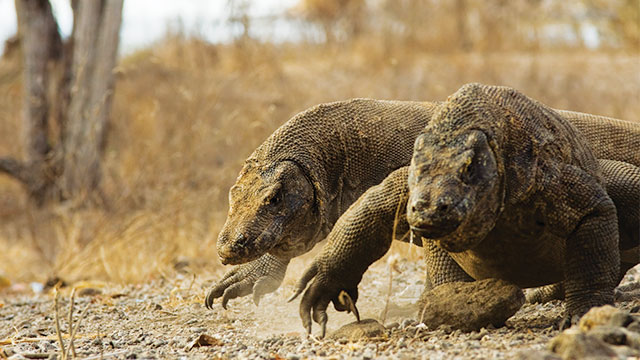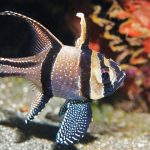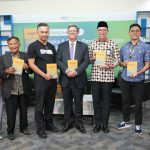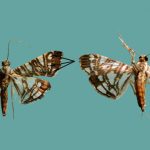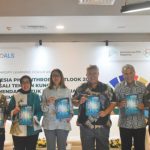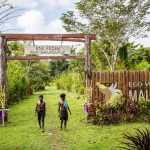Jakarta (Greeners) – Through a letter from the Minister of Agriculture on March 6, 1980, the government established the Komodo National Park conservation area. At that time, the Komodo National Park designation was part of an effort to educate and conserve the komodo dragons. Now, that dream has shifted, says Yuvensius Stefanus Nonga, Division of Natural Resources of the Indonesian Forum for the Environment (Walhi) East Nusa Tenggara (NTT). Nonga assesses that government policies and regulations, especially the Ministry of Environment and Forestry (KLHK), are far from the spirit of determining the komodo area four decades ago. Now the development of regulations and policies targeting Komodo National Park as the prima donna of Indonesian tourism.
According to Nonga, since 1992, the government allowed large-scale tourism developers to enter the komodo dragon habitat. Fueled on economic ambitions, the government continues to develop conservation land into premium tourist attractions that threaten animals and biodiversity. How does the large-scale building of initiatives changing the habitat of the komodo dragon impact the animals themselves?
Nonga explains, the komodo dragon, Varanus komodoensis, is one of the rare species of lizard. It is the only ancient animal that has survived to this day and is listed as a world wonder. The komodo dragon is a solitary animal or has a solitary nature except during the mating season.
“Due to its solitary nature, it tends to stay away from the crowd and be alone. Only when it is the new mating season, the komodo dragons would gather. It means that the large-scale development or access to crowds disrupts the habitat of the komodo dragon itself. So, what needs to be done is a development policy in the komodo dragon’s habitat related to conservation efforts. This policy should include letting the komodo dragons live naturally and letting them become wild animals,” says Nonga to Greeners, Monday (26/10/2020).
NGO: The Government Should Focus on Developing Science and Education
The largest habitat for Komodo dragons is on Rinca Island and Padar Island. Ecologically, Nonga continues, these two islands have the most suitable topography to support this species’ growth and development. Further, Nonga conveys that the government should focus on science and education efforts, considering that komodo experts are still rare. In fact, in the area of the komodo dragons’ original habitat, no one has expertise in these wild animals.
“Komodo is a world wonder that needs to be prioritized. We should prioritize development projects that based on studies, research. Specifically related to the komodo dragon gene. It has to be a priority before determining a ‘super-premium’ development model. This model threatens the komodo dragon habitat,” he says.
Further, Nonga deplores KLHK, as the holder of the conservation area authority, which opened its jurisdiction to other ministries. KLHK open their jurisdiction to other ministries such as the Ministry of Maritime Affairs and Investment coordinator. The administration has paved the way for large investors to carry out developments that are not pro-conservation.
The impact of this tourism development, Nonga continues, has made the komodo dragons leave their habitat to go to other islands. The viral photograph of a komodo dragon blocking a truck is a sign of the komodo annoyance of the government’s “Jurassic Park” project in the komodo dragon conservation area of Rinca Island.
“It has become evident that the komodo dragon is disturbed by development activities there. The population of komodo dragons is only 3,000. At this time, the government should think more about protecting the population than building the Jurassic Park,” protests Nonga.
Baca juga: Indigenous Women Demand the State to Recognize Their Emission Reduction Efforts
PUPR Claims the Arrangement of Rinca Island Still Protects Komodo Habitat
The Rinca Island Jurassic Park Project’s implementation began after the signing of the collaboration between the Ministry of Public Works and Public Housing (PUPR) and KLHK through the Directorate General of Natural Resources and Ecosystem Conservation (KSDAE) on July 15, 2020.
In his official press release, PUPR Minister Basuki Hadimuljono says that infrastructure development in each National Tourism Strategy Area is planned in an integrated manner. It is including the arrangement of areas, roads, provision of raw water and clean water, waste management, sanitation, and improvement of residents’ housing through an infrastructure development master plan that considers environmental, social, and economic aspects.
The same press release states the Rinca Island project is entering the stage of demolishing the existing building and removing the debris; cleaning the pile cap and making piles. For worker safety and protection of the komodo dragons, fencing has been carried out at the board of directors’ office, workers’ sheds, materials, construction locations, information centers, and ranger lodging.
“We are always accompanied by a ranger from the komodo National Park so that the construction process of infrastructure and facilities does not damage or disturb the habitat of the Komodo dragons,” says the Head of the NTT Provincial Settlement Infrastructure Center, Herman Tobo.
The Environmental Permit for the Arrangement of the Rinca Island Area in Pasir Panjang Village, Komodo District, West Manggarai Regency, was issued on September 4, 2020. This permit is based on the Minister of Environment and Forestry Regulation No. 16/2012 concerning Guidelines for the Preparation of Environmental Documents, which have considered the impact of development on the habitat and behavior of komodo dragons.
For information, to invite millions of foreign tourists, the government established ten National Tourism Strategic Areas (KSPN) or ten “new Bali” as stipulated in Presidential Regulation Number 3 of 2016. The only tourism on the island of Komodo-Labuan Bajo, Nusa Tenggara.
Reporter: Dewi Purningsih
Editor: Ixora Devi







































